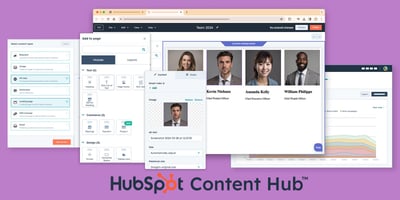You’ve spent time and budget driving traffic to your website — now it’s up to your forms to do their job. Whether you’re offering a free download, booking demos or capturing newsletter signups, forms are the gateway to converting interest into action.
HubSpot gives you a solid foundation with its drag-and-drop form builder, smart fields and automation tools. But if your form conversions are lower than you’d like, there’s probably room for improvement.
Here’s how to make your HubSpot forms work harder (and smarter) — with simple changes that can make a big difference to your conversion rate.
1. Keep It Short
Here’s the golden rule: the shorter the form, the better the chance someone will fill it in. Every field you add is one more reason for someone to abandon the form.
Start by trimming the fat. Do you really need their phone number at the top of the funnel? Probably not.
Try this: Stick to just a name and email for your first touchpoint. Use follow-up emails or later forms to collect more detail.
2. Use Smart & Progressive Fields
One of the best features in HubSpot is smart fields. These fields can change based on what you already know about the contact. So, if someone’s already filled in their job title, you can skip it next time and ask something new.
This is called progressive fields and it’s a great way to build a fuller picture of your leads without overloading them upfront.
Set this up in HubSpot’s form settings to collect more info over time.
3. Use a CTA That Speaks to Real People
The button at the end of your form might be small but it matters. A generic “Submit” doesn’t tell the visitor anything about what they’re getting. Switch it up with something that reflects the benefit.
Instead of:
- “Submit”
Try: - “Get the Free Guide”
- “Book My Demo”
- “Send Me the Checklist”
Pro tip: First-person CTAs tend to convert better because they feel more personal.
4. Match Your Form to the Buyer’s Journey
Not everyone who visits your site is ready to talk to sales. Some are just browsing, while others are nearly ready to buy. Your forms should reflect that.* Early stage (awareness): Name + email only.
- Middle stage (consideration): A few more fields like company size or role.
- Late stage (decision): If they’re booking a demo or talking to sales, you can ask more qualifying questions.
Use HubSpot’s lifecycle stages to tailor forms accordingly.
5. Test, Tweak, Repeat
Not sure if your form is too long? Wondering if a different CTA would perform better? Don’t guess — test it.
HubSpot lets you A/B test forms (with a Pro or Enterprise plan). You can try variations in layout, wording, number of fields, or even the type of form (inline vs. pop-up) to see what resonates most with your audience.
Test one thing at a time so you know what’s driving results.
6. Make It Work on Mobile
More than half of your visitors are likely checking your site on a phone or tablet. If your form isn’t mobile-friendly, you’re losing leads.
Keep it clean:
- Large text fields
- Easy-to-tap buttons
- No tiny checkboxes or tiny fonts
HubSpot’s forms are responsive, but always test your landing pages on mobile before you go live.
7. Break Longer Forms into Steps
If you absolutely need to collect more than a few details (like for a quote request or assessment), split the form into two or more steps.
Multi-step forms feel more manageable and keep users from bouncing. They can also help improve completion rates for more involved lead capture flows.
8. Build Trust Around the Form
Visitors are more likely to hand over their details if they trust you. Reassure them with trust signals close to the form:
- A note that you won’t share their info
- Quick testimonial or client logo
- Mention of GDPR compliance
- Security badges, if relevant
A little reassurance goes a long way — especially if it’s the visitor’s first time engaging with your brand.
Final Thoughts
Getting better results from your HubSpot forms doesn’t require a massive overhaul. Small, strategic tweaks — like simplifying your questions, testing different CTAs, and using smart fields — can lead to better conversion rates and better-quality leads.
Keep the user experience front and center, and don’t be afraid to experiment. The data you collect will tell you what’s working and what needs work.





